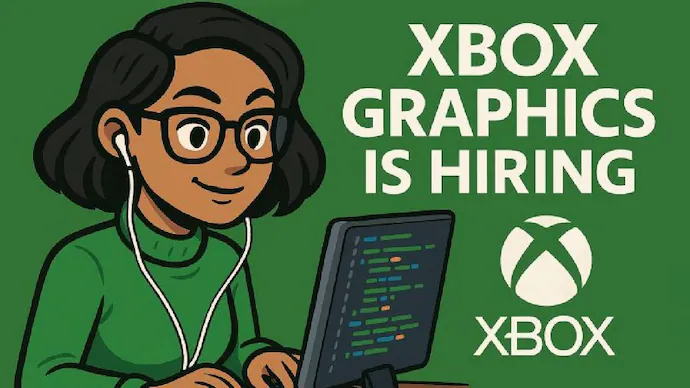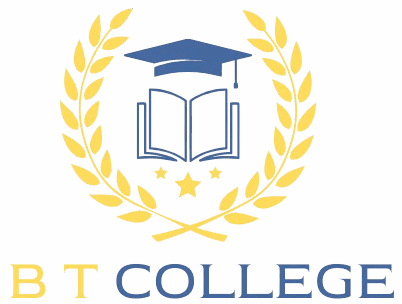Microsoft recently found itself at the center of a public relations nightmare that perfectly encapsulates the growing tension between human workers and artificial intelligence. After laying off over 9,000 employees, the tech giant posted a job listing for its Xbox Graphics team featuring an AI-generated image a move that sparked widespread outrage and highlighted the complex relationship between corporate cost-cutting and technological advancement.
The controversy began when Microsoft shared a LinkedIn post seeking candidates for two Xbox Graphics positions: Senior Software Engineer and Software Engineer 2. Both roles, based in Redmond, Washington, offered competitive salaries ranging from $119,800 to $234,700 annually. However, it wasn’t the job specifications that caught attention—it was the accompanying AI-generated image showing a woman apparently working at a computer.

The backlash was swift and merciless. LinkedIn users immediately called out the irony, with one comment reading, “How about you hire a graphic designer first???” Another user questioned, “How can such mediocrity be found in the Xbox team???” The criticism extended across social media platforms, with users on X (formerly Twitter) expressing disbelief that a company with Microsoft’s resources would resort to AI-generated imagery for recruitment purposes.
The Deeper Issues Behind the Backlash
The controversy reveals several troubling aspects of how major corporations approach both human resources and technology integration. The timing of the AI-generated hiring post, coming immediately after massive layoffs, created an unfortunate narrative about corporate priorities.
Critics pointed out the poor quality of the AI-generated image, noting that it depicted the woman looking at the back of a computer monitor—a detail that made little practical sense. This technical flaw became symbolic of larger concerns about AI’s limitations in creative tasks and the potential consequences of over-relying on automated solutions.
The salary ranges for these positions $119,800 to $234,700 for senior roles and $100,600 to $199,000 for Software Engineer 2 positions demonstrated that Microsoft wasn’t cutting corners on compensation. This made the decision to use AI-generated imagery even more puzzling to observers who wondered why a company willing to pay premium salaries couldn’t invest in professional graphic design.
The Human Cost of Automation
Microsoft’s recent layoffs are part of a broader trend affecting the technology industry. The company had already eliminated more than 6,000 roles in May, followed by additional cuts in June. These 9,000 new layoffs brought the total job losses to over 15,000 since May alone, making it one of the most significant workforce reductions in the company’s history.
The layoffs weren’t limited to Microsoft. Meta reduced its workforce by 5% through performance reviews, while Google’s parent company Alphabet laid off hundreds of employees as part of its transition to more AI-focused operations. Amazon also eliminated thousands of positions across various departments, including its books and devices divisions.
These widespread job cuts have created an environment where workers feel increasingly threatened by automation. When companies simultaneously eliminate human jobs while prominently featuring AI-generated content in their operations, it sends a message that technology is replacing human creativity and expertise.
The Xbox Executive’s Controversial Advice
Adding insult to injury, Matt Turnbull, an executive producer at Xbox Game Studios, suggested that laid-off employees should seek support from AI chatbots like ChatGPT or Microsoft’s own Copilot. In a now-deleted LinkedIn post, Turnbull acknowledged the challenging nature of job loss but recommended using large language models to “reduce the emotional and cognitive load that comes with job loss.”
His advice included using AI prompts to generate resume bullet points, write outreach messages, and even reframe self-doubt after layoffs. While Turnbull’s intentions may have been sincere, the suggestion that workers should turn to AI for emotional support after losing their jobs to automation struck many as tone-deaf.
The post was eventually deleted, but not before it was captured and shared widely, adding another layer to the controversy surrounding Microsoft’s handling of its workforce reduction and AI integration.
Industry-Wide Implications
This controversy reflects broader challenges facing the technology industry as companies navigate the integration of AI while managing human workforces. The incident highlights several key issues:
Corporate Communication Missteps: The decision to use AI-generated imagery for hiring posts, especially following layoffs, demonstrates a disconnect between corporate decision-making and public perception. Companies must consider how their choices in automation and technology use are perceived by both employees and the general public.
Quality Control Concerns: The poor quality of the AI-generated image raises questions about the effectiveness of current AI tools in creative applications. When AI-generated content contains obvious errors or inconsistencies, it can undermine confidence in the technology’s capabilities.
Employee Morale and Trust: Using AI-generated content in recruitment materials while simultaneously laying off human workers can damage employee morale and public trust. It suggests that companies may prioritize cost-cutting over quality and human expertise.
Broader Economic Implications: The controversy touches on larger questions about the future of work and the role of AI in displacing human jobs. As companies increasingly adopt AI technologies, they must balance efficiency gains with the social and economic impact of job displacement.
The Public’s Response
Social media reactions to Microsoft’s hiring post revealed deep frustration with corporate priorities. Users expressed anger not just at the use of AI-generated imagery, but at what they saw as a broader pattern of devaluing human workers while embracing automation.
Comments like “they laid off 9k people just to let mid AI art cook… this is late-stage capitalism in 4k” reflected concerns about the broader economic implications of AI adoption. Others focused on the practical shortcomings of the AI-generated image, with one user joking, “I can stare at the back of a PC monitor and smash keys….I should apply.”
The controversy also sparked discussions about the appropriate use of AI in corporate communications. Many argued that while AI can be a valuable tool, it shouldn’t replace human creativity and expertise in areas where quality and nuance matter.
Looking Forward: Lessons for Corporate AI Integration
Microsoft’s hiring post controversy offers several important lessons for companies integrating AI into their operations:
Context Matters: The timing and context of AI implementation can significantly impact public perception. Companies must consider how their use of AI technology appears to stakeholders, especially during periods of workforce reduction.
Quality Standards: AI-generated content should meet the same quality standards as human-created materials. Poor-quality AI output can damage brand reputation and undermine confidence in the technology.
Human Oversight: Critical corporate communications should involve human oversight and review. While AI can assist in content creation, human judgment remains essential for ensuring appropriateness and quality.
Transparency and Communication: Companies should be transparent about their use of AI and communicate clearly about how technology integration affects their workforce and operations.
The Ongoing Debate About AI and Employment
The Microsoft controversy is part of a larger conversation about AI’s role in the modern workplace. While proponents argue that AI can enhance productivity and create new opportunities, critics worry about job displacement and the devaluation of human skills.
The incident also highlights the importance of thoughtful AI implementation. Companies that rush to adopt AI without considering the broader implications risk creating public relations problems and damaging employee morale.
As AI technology continues to evolve, companies must find ways to integrate these tools while maintaining respect for human workers and creativity. This requires careful consideration of when and how AI should be used, as well as ongoing dialogue with employees and stakeholders about the role of technology in the workplace.
Navigating the Future of Work and AI
Microsoft’s hiring post controversy serves as a cautionary tale about the challenges of integrating AI into corporate operations. The incident demonstrates that successful AI adoption requires more than just technological capability it demands thoughtful implementation, quality control, and sensitivity to human concerns.
As companies continue to explore AI’s potential, they must balance efficiency gains with the need to maintain employee trust and public confidence. This means being transparent about AI use, maintaining quality standards, and considering the broader social and economic implications of automation.
The future of work will likely involve collaboration between humans and AI, but achieving this balance requires careful planning and consideration of all stakeholders. Companies that succeed in this integration will be those that recognize AI as a tool to enhance human capabilities rather than replace them entirely.
The Microsoft controversy ultimately reminds us that while AI can be a powerful tool, it cannot replace the nuanced judgment, creativity, and emotional intelligence that humans bring to the workplace. As we move forward, the challenge will be finding ways to harness AI’s benefits while preserving the value of human contribution to our organizations and society.
FAQs
Q1. What is the Microsoft AI hiring controversy about?
A1. The controversy stems from Microsoft using AI-generated images in Xbox job postings shortly after laying off 9,000 employees, raising concerns about the balance between utilizing AI and preserving human jobs.
Q2. Why are people upset about the use of AI-generated images?
A2. Critics argue that the use of AI-generated content in job postings, particularly after significant layoffs, appears insensitive and highlights the growing tension between advancing automation and supporting human employment.
Q3. How has Microsoft responded to the backlash?
A3. Microsoft has not released an official detailed statement addressing the specific concerns but has emphasized its commitment to responsible AI practices and fostering innovation alongside societal benefits.
Q4. What are the broader implications of this controversy?
A4. The incident raises questions about the ethical implementation of AI in workplaces, including its impact on job security, corporate responsibility, and the balance needed between automation and the human workforce.
For More Information Click Here

